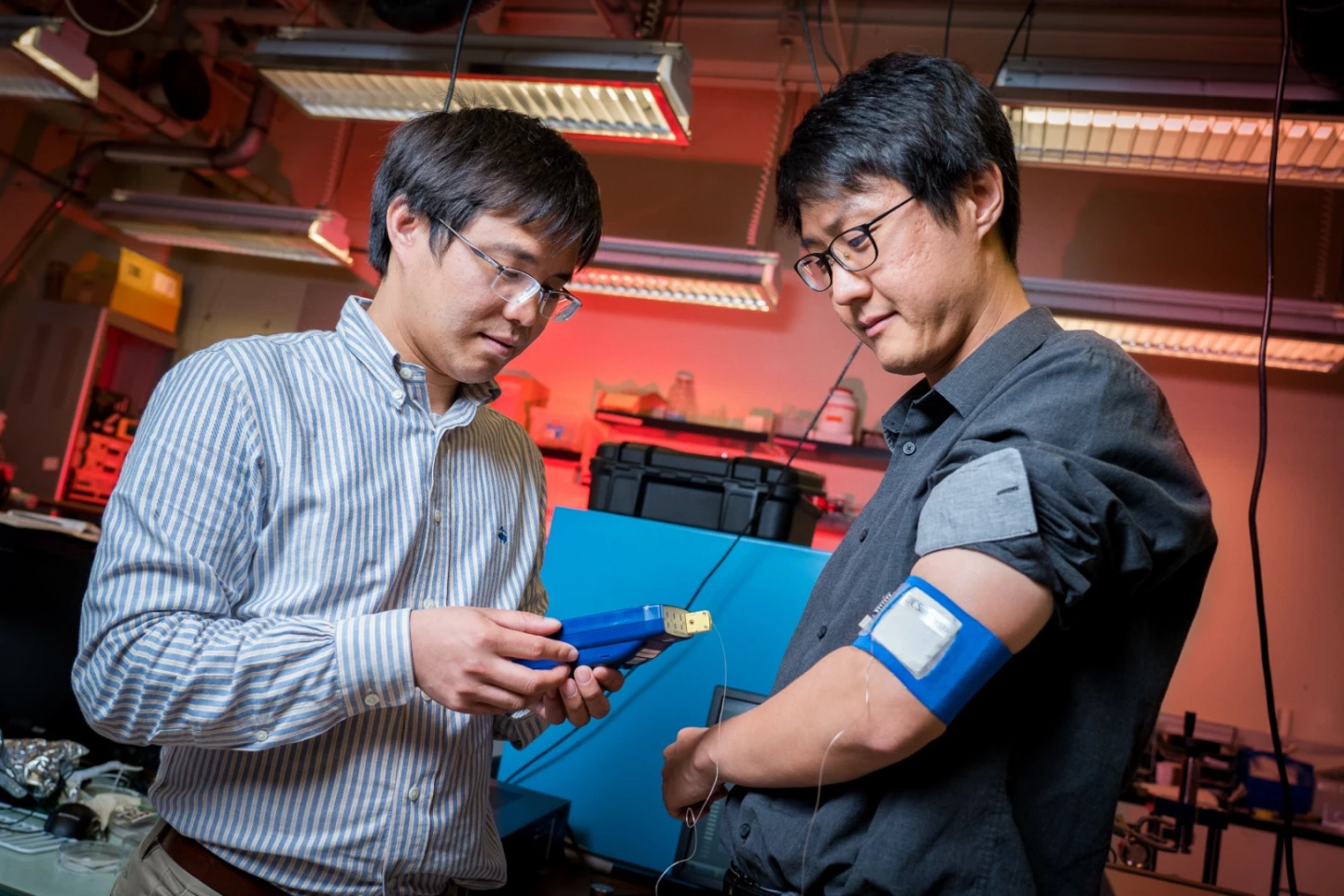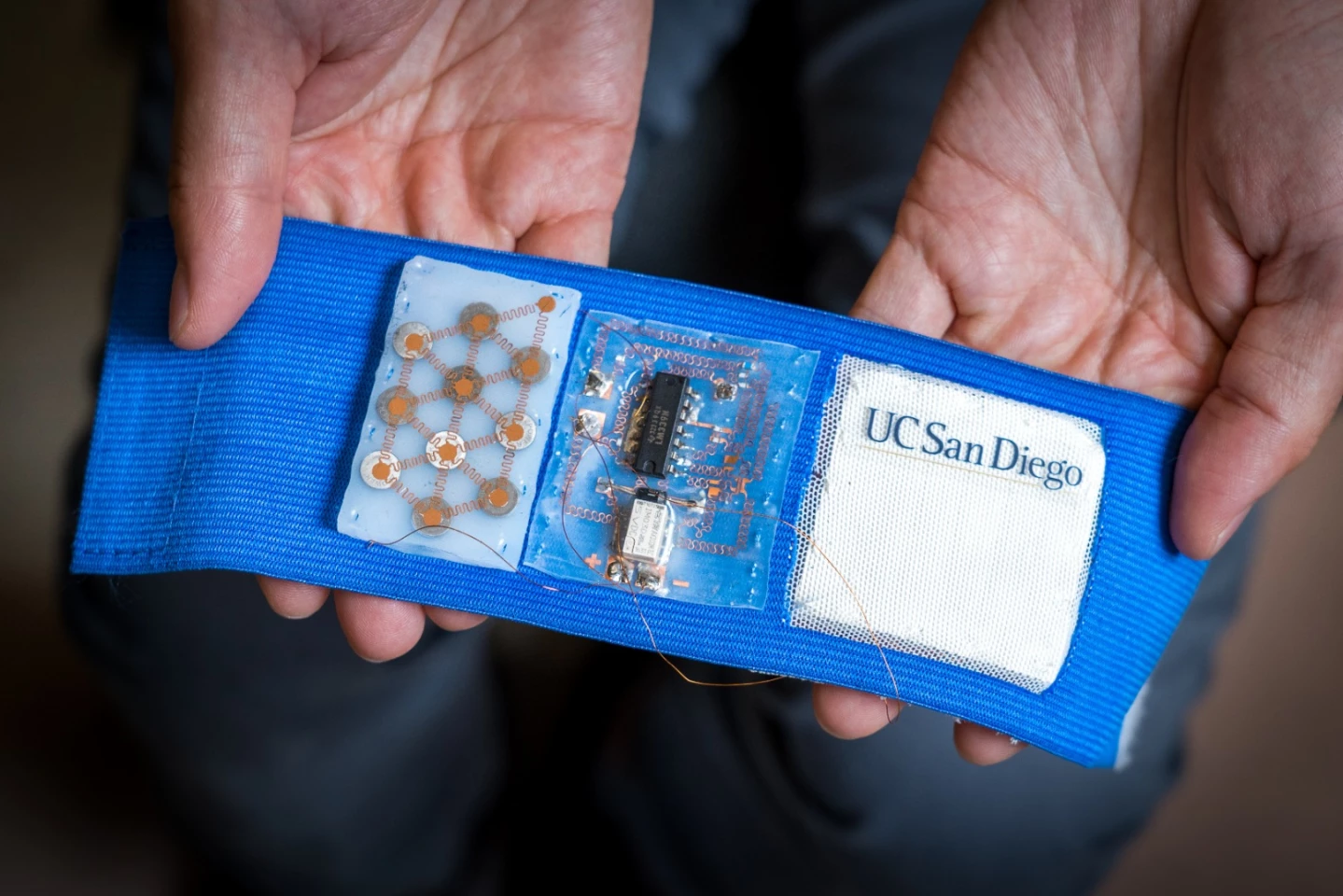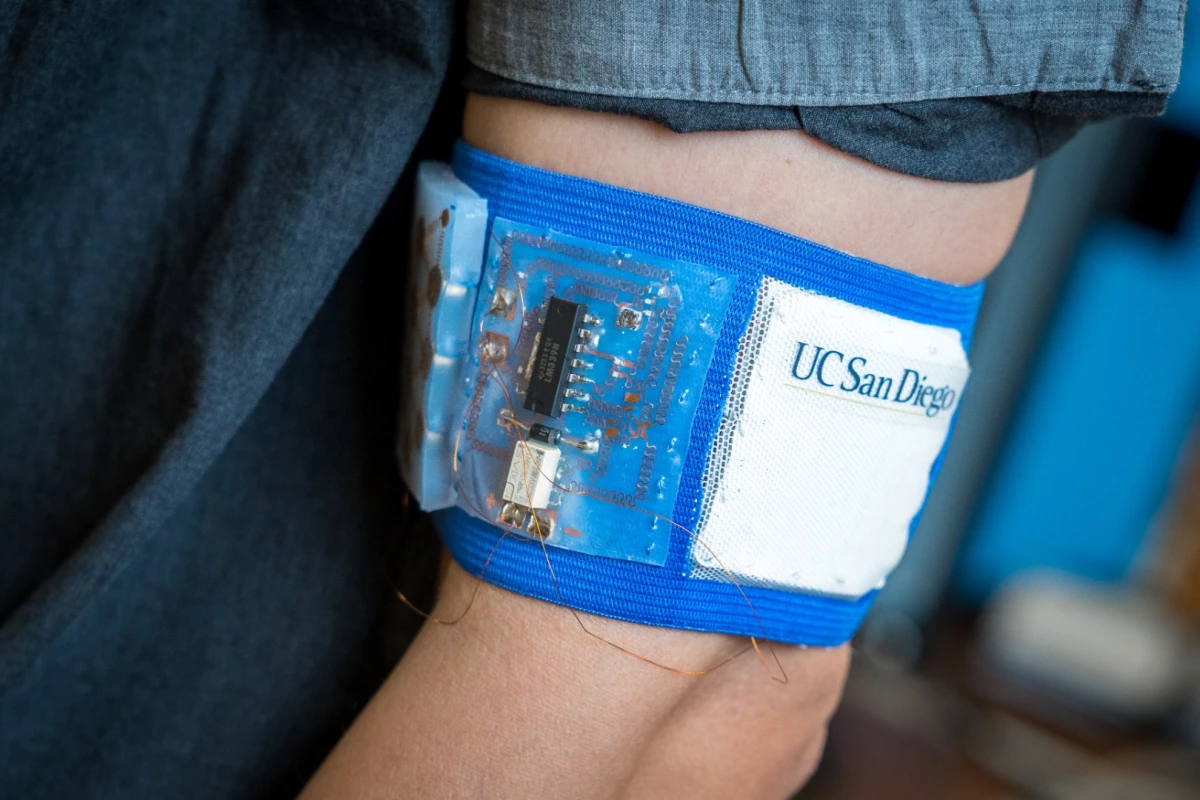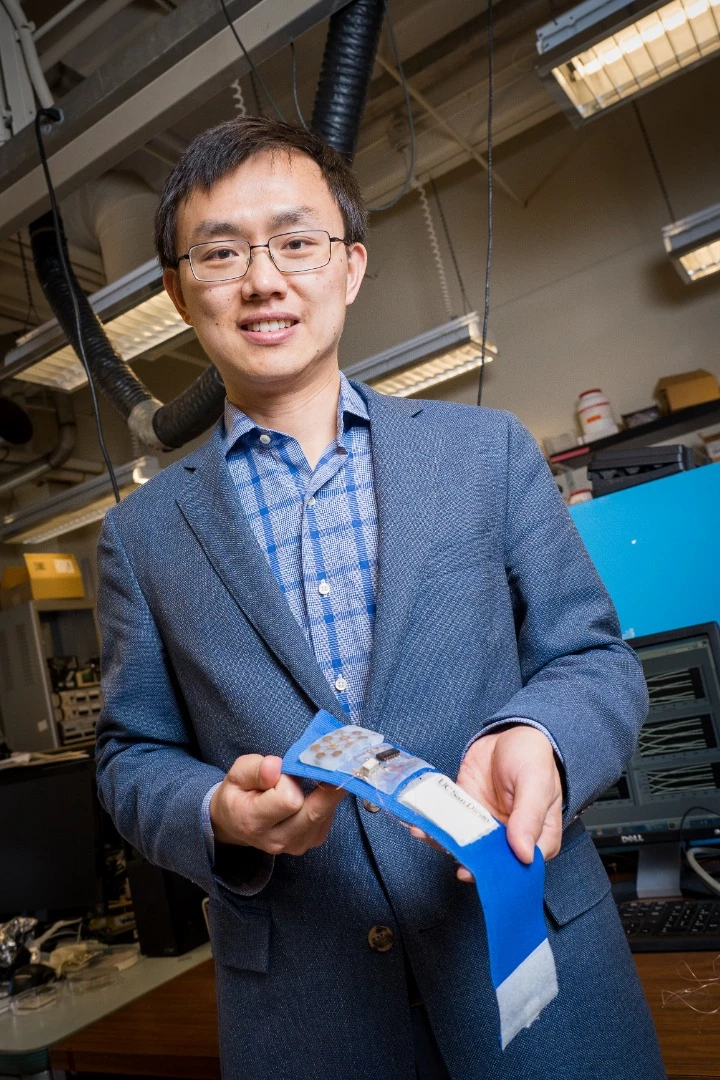It's warming up in the Northern Hemisphere, which means many offices will be powering on the aircon to help keep things comfortable for workers. But what if you could don a wearable that could help you keep your cool, and slash energy usage while doing so? Engineers from the University of California San Diego have developed a proof-of-concept armband that can keep the wearer's skin at a constant temperature, even when the ambient temperature is raised or lowered. And the technology is being scaled up to vest size.
"This type of device can improve your personal thermal comfort whether you are commuting on a hot day or feeling too cold in your office," said study lead Renkun Chen, a professor of mechanical and aerospace engineering.
Designed to be comfortable and convenient to wear, the device is powered by a flexible battery pack comprising an array of coin cells and is built around a 5 x 5 cm (1.9 x 1.9 in) patch made of thermoelectric (bismuth telluride) alloy pillars soldered to thin copper electrode strips and housed between two stretchy elastomer sheets that are engineered to conduct heat.
An electric current causes heat to move from one elastomer sheet to the other, and as the current flows over the bismuth telluride pillars, heat is driven along with it. This results in one side of the patch heating up and the other cooling down.
"To do cooling, we have the current pump heat from the skin side to the layer facing outside," said Chen. "To do heating, we just reverse the current so heat pumps in the other direction."

To test the device, the engineers embedded a prototype patch into a mesh armband and wrapped it around study author Sahngki Hong's upper arm. The armband cooled his skin to a set temperature of 89.6° F (32° C) in a couple of minutes, and managed to keep the skin at that temperature while the ambient temperature was lowered to 71.6° F and raised to 96.8° F.
But rather than focus on keeping one small area of the body cool in the hope that the whole body will benefit – as with MIT's Wristify and the Aircon Watch – the aim of this project is to scale up the device to a vest-sized wearable, which the engineers estimate would require 144 patches.
The team reckons that such a vest would use about 26 watts in total to cool a wearer on "an average hot day." In extreme heat, that could rise to 80 watts – or about the same as running a laptop. Either way, the engineers say that keeping individuals comfortable in a large room would be more energy-efficient than cooling or heating the whole room.
"If there are just a handful of occupants in that room, you are essentially consuming thousands of watts per person for cooling," said Chen. "A device like the patch could drastically cut down on cooling bills."

The project team – which is a collaboration between a number of research groups from UC San Diego's Jacobs School of Engineering – is now working to build a prototype cooling and heating vest, and is hoping that the technology will be ready for commercial applications in a few years.
"We've solved the fundamental problems, now we're tackling the big engineering issues – the electronics, hardware, and developing a mobile app to control the temperature," added Chen.
The research has been published in the journal Science Advances.








